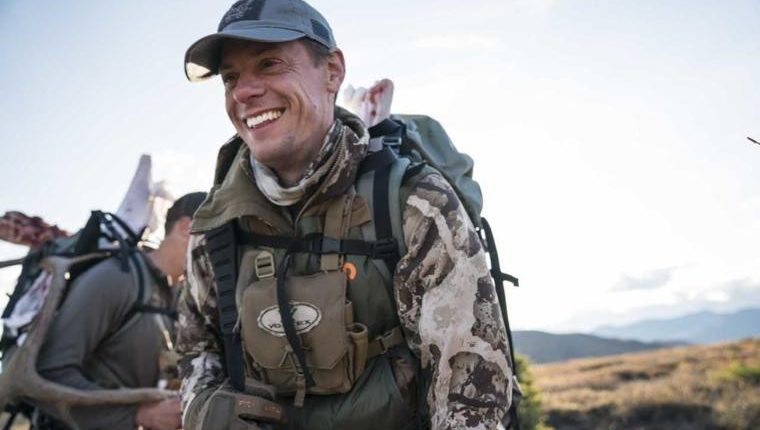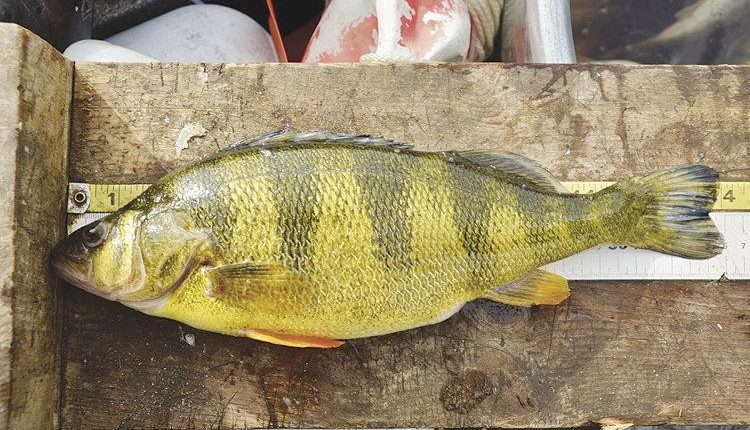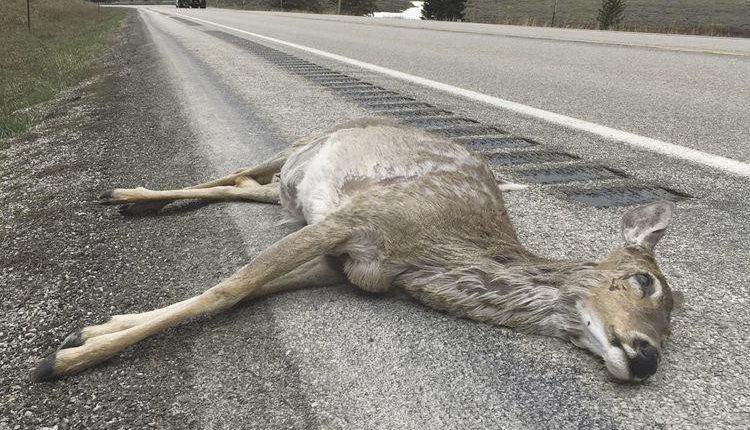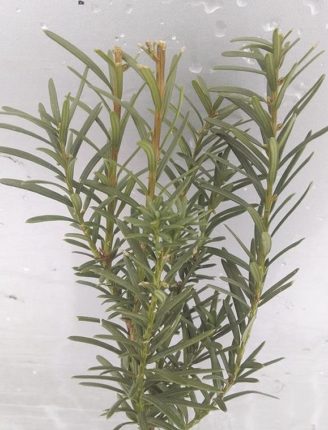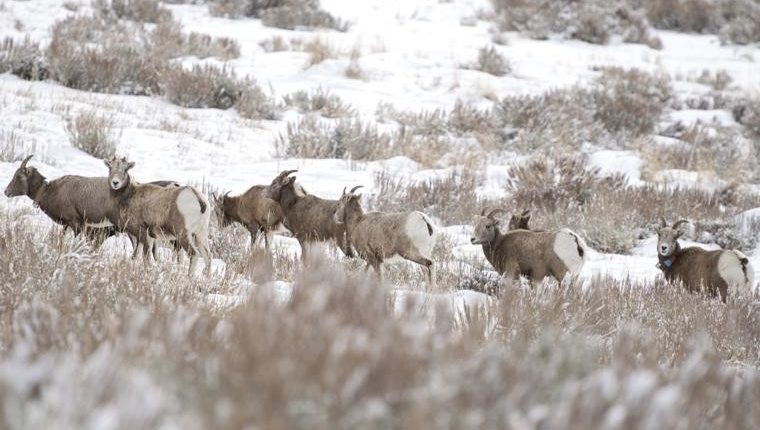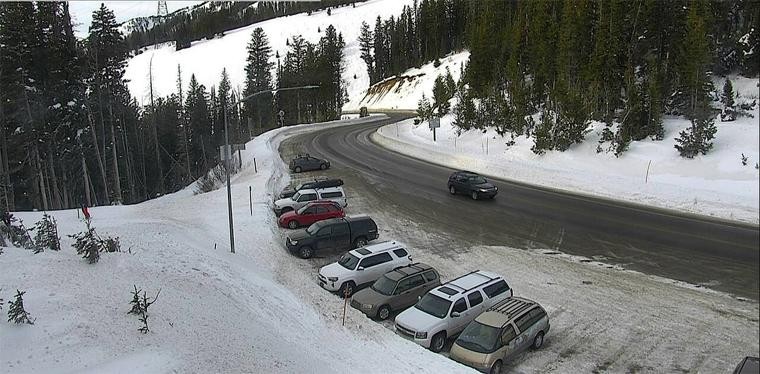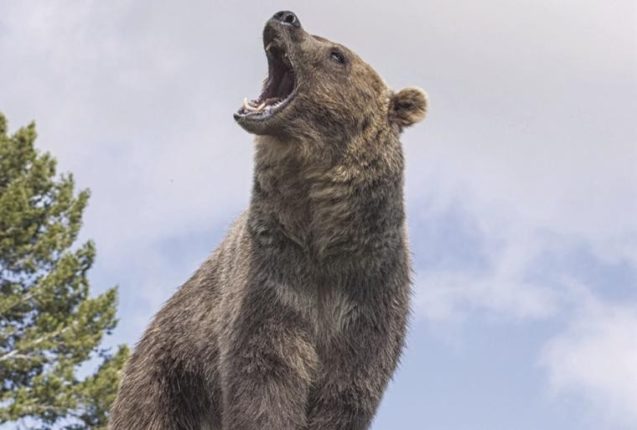The take season for mountain lion in Game Management Units 70, 73, and 73A in Southeast Idaho has been re-opened effective immediately.A recently harvested male mountain lion was incorrectly recorded as a female, prompting the closure of the season on …
Category: Outdoors
Netflix hunting show opens headquarters in Bozeman
Inspired by Montana’s culture of outdoor recreation, a popular hunting show is moving its headquarters to Bozeman.
“MeatEater,” currently in its seventh season, follows its host Steven Rinella as he hunts, fishes and cooks game around the world. It’s also part of an outdoor media company that regularly posts recipes and articles about conservation to its website.
The show has filmed several times in Montana and hosts plan on shooting more episodes in the state, after receiving a $40,000 film grant from the Montana Department of Commerce to feature Montana locations in the video series. It will be the first Netflix series shot in Montana with support from the Big Sky Film Grant. Montana-based investment firm Next Frontier Capital has also invested in the show.
“We’ve filmed from South America to Alaska,” Rinella said. “It’s always been a goal of mine to get back here, especially after having kids.”
Rinella has been hunting since he was a kid and would trap muskrats with his friends to sell them for their hides. He previously lived in Montana for about 10 years, after getting his master of fine arts in creative nonfiction from the University in Montana.
He has written for Outside magazine and a few other publications.
The show originally started in 2012 with four staff members, but it has grown to 18 employees, and Rinella said it plans to hire more from within and outside Bozeman. There was a consensus among employees that Bozeman was the right place to base operations, he said, with a university to draw from and plenty of amenities to make people want to make the town their home.
The show and its media company offer content contributor, editorial, leadership and production positions. It has already hired Kevin Sloan as its CEO, the former president of Sitka hunting gear.
There wasn’t really a second choice for relocation after Bozeman, which offers a well-connected airport, quality workforce and a culture of outdoor recreation. Not to mention, Montana’s known for its public land.
“There’s literally no other place I’d rather live, nor a more authentic home for ‘MeatEater,’” Rinella said in a press release.
Smoking salmon
There was definitely a miracle on 34th Street or whatever street the Claycomb house is on the night before Christmas Eve. While digging through the freezer to find something or the other, I found one last package of salmon fillets. It was a fillet of silvers from two years ago while fishing with Alaska Expedition. The Claycomb girls were rejoicing — which brings up the topic of this week’s article: How to smoke salmon.
There are a lot of good ways to cook salmon but the two favorite methods in my house are blackened and smoked.
Blackening is not hard. Skin the salmon. I like to use a pair of needle-nose pliers and pull out all of the bones. Next, melt a little butter in a Lodge cast iron skillet. Drop the fillet in the butter and then flip. Pull it out and sprinkle on heavily some Paul Prudhomme’s Blackened Redfish spices. The butter will cause the spices to stick to the fillet.
Add a little butter to the skillet and turn up the heat. The Cajuns say to do this outside because you want the skillet smoking. I don’t cook it quite that hot, but you do want it to semi-burn a crust on the outside pretty fast. If the heat is too low, it will cook the fish throughout and be dry. You want to get a blackened crust on the outside, but the inside of the fillet should be almost rare or at least moist. Salmon is great blackened.
But the way that my girls like it best is smoked. So that’s what we’re going to focus on today. Here’s how I do it. Leave the skin on (I’ll explain why later). Pull the bones with a pair of needle-nose pliers.
Mix 3 to 4 cups of warm water with ¾ cup brown sugar, ¼ cup white sugar, salt, little pepper, ginger and stir. You can marinate your fillet in a cake pan or it works nice to put it in a plastic bag. Squeeze the air out of the bag so the marinade and bag are semi-tight against the fillet.
Marinating fish or jerky in a bag is nice because every hour you can massage it and not even get your hands dirty. On fish, I just flip it, which will help ensure that all surface areas are being marinated.
I like to let my salmon marinate at least four hours. In the old days, I’d smoke it on my smoker or grill on a piece of foil, skin side down. But that holds in the moisture so it tastes broiled instead of smoked. Here’s the best way. Smoke your salmon on a board, skin side down. The skin will stick to the board but no big deal because you aren’t going to eat the skin anyway.
The Native Americans will tell you to use a cedar plank but an oak cutting board or whatever will work fine. I soak my board in water before smoking to prevent it from burning, but most of my smoking boards are all charred on bottom.
For ease and consistency, I use a Camp Chef wood pellet grill. That way I can regulate the heat to a T, and it still has a good smoke flavor. I suppose any flavor of wood is good, but on fish I prefer apple.
Smoking on a wood plank lets the moisture run off so you get a dried fillet instead of a water-logged, broiled-tasting piece of fish.
Tom Claycomb lives in Idaho and has outdoors columns in newspapers in Alaska, Idaho, Utah, Nevada, Colorado and Louisiana. He also writes for various outdoors magazines and teaches outdoors seminars at stores like Cabela’s, Sportsman’s Warehouse and Bass Pro Shop.
Lake Cascade perch fishing to remain good, but jumbos may decline
Since 2012, Fish and Game’s McCall fisheries staff has conducted annual fall surveys on Lake Cascade — which has produced two world record perch and several state records in recent years — by using gillnets and recording the species and sizes of captured fish.
Overall, perch numbers are similar to 2017 numbers, but down from annual surveys since 2012 at the lake, which is about 88 miles north of Boise. Also, perch greater than 10 inches dominate the population and have since 2014-2015.
This information is used by McCall’s fishery staff to manage game fish in the reservoir. In particular, biologists monitor yellow perch and northern pikeminnow populations.
Perch are the most popular fish for anglers in the lake, and pikeminnow predation is the single biggest threat to the perch population. Biologists also monitor smallmouth bass, rainbow trout and kokanee numbers.
Change is normal
Changes in the perch population since 2012 were expected because perch populations are cyclical by nature.
Over the past five years, anglers have enjoyed fishing on a very large group of large perch, commonly known as jumbos, which were produced shortly after perch fishery restoration work was completed in 2006.
In Lake Cascade, the main food source for perch is smaller perch. But from 2006 thru 2012, there was a new, and relatively small perch population with fewer large perch to eat the smaller perch.
That enabled a large portion of those smaller fish to survive and grow relatively unchecked into the amazing perch fishery that in recent years produced numerous trophy-sized fish, including two world records and several state records.
Highlights for 2018 included the new Idaho state catch-and-release record, and the North American Freshwater Fishing Hall of Fame’s all tackle, catch-and-release world record, which was a 17-inch perch caught in May by David Ekmark.
The large number of big perch anglers enjoyed the last few years has had a huge impact on young perch survival. As you can see in the chart above, the numbers of 7 to 10 inch fish has declined over the last couple years. This is a direct result of predation on small perch.
Because there are fewer 7- to 10-inch perch to replace the big perch being harvested and dying of old age, the number of perch larger than 10 inches will decline over the next few years.
But as the number of big perch declines from old age and angler harvest, predation on small perch is also reduced, which allows more smaller perch to become the next generation of jumbos.
Small perch up to 8 inches are also the primary food for pikeminnow, and predation by pickminnows is the primary threat to the perch fishery in Lake Cascade, so biologists and staff have continued pikeminnow removal each spring since 2012.
Biologists have also monitored the harvest rates of perch over 10 inches with tagging studies to evaluate if harvest restrictions are needed to protect those larger fish.
The tagged fish anglers catch and report is valuable information to determine if harvest rates are too much to maintain large perch numbers. Results of those studies indicated most perch greater than 10 inches actually die of old age, or other natural causes, rather than being caught by anglers.
No walleyes is good news
The first and only documented walleye was caught by an angler in Lake Cascade in May of this year. Fish and Game is highly concerned about the illegal introduction of walleye in the lake because predation by pikeminnow caused the perch population to collapse in the 2000s. And illegal walleye stocking could add another predator that could potentially wipe out the perch fishery. Biologists did not collect any walleye during the fall survey.
Rainbows trout, smallmouth and kokanee population remain healthy
Cascade’s rainbow trout and kokanee fisheries are a direct result of annual stockings, and smallmouth bass are a self-sustaining population that Fish and Game monitors.
Surveys showed good numbers of rainbow trout in the fall, ranging from 12 to 25 inches, with most in the 10- to 16-inch range. Fish and Game recently switched to stocking 12-inch rainbows, which resulted in better survival. The fishing outlook is excellent for rainbow trout in 2019.
Surveys also showed kokanee at nearly every netting site in 2018. Most were in the 12-inch to 15-inch range.
Netting also collected a large number of 10-inch to 18-inch smallmouth bass, with half of those larger than 14 inches, and the largest at nearly 20 inches.
In summary, annual fish surveys are vital to managing Lake Cascade and its world-class perch fishery. While Fish and Game expects a decline in the number of jumbo perch over the next few years, biologists don’t expect them to vanish entirely.
Plus, they expect a strong rebound in the following years as long as pikeminnow numbers are held in check and illegal walleye introductions stop and fail to establish a population.
If anyone catches a walleye in Lake Cascade please report it with a picture to the McCall office at 208-634-8137, or the Nampa office at 208-465-8465.
People can salvage some road-killed wildlife in idaho
If people find animals struck by vehicles, many are legal to salvage
Winter is a tough time for wildlife, especially big game, because it can be among the most hazardous seasons for them. Deer, elk and other animals are usually congregated in lowlands commonly known as “winter range,” which is often near cities, communities and highways. That also puts them close to vehicle traffic, and road kills are evidence of the toll highways can take on wintering animals.
Motorists are encouraged to be especially watchful for wildlife during winter, especially at night, or during morning and evening hours when animals are most active. Vehicle/animal collisions are dangerous, expensive, and obviously harmful to wildlife.
If you encounter an animal that’s been hit by a vehicle, you’re allowed to salvage some animals. People can salvage and keep wildlife classified as upland birds, upland game animals, big game, furbearers and predators that are lawfully hunted or trapped in the event that one of those animals has been accidentally killed by a vehicle.
Here’s a list of salvageable species:
Unprotected non-game wildlife are also legal for salvage. However, many animals are not allowed for salvage, including protected non-game wildlife, animals that are federally protected under the Threatened or Endangered Species Act, migratory birds (which are also federally protected), and other wildlife species that cannot be lawfully hunted or trapped.
Before considering salvaging any animal, also remember there are rules you must follow:
Animal must have been struck by accidental vehicle collisions.
Before you claim any roadkill salvage, consider the safety of yourself and fellow travelers. Always abide by traffic and safety laws.
You have 24 hours to notify Fish and Game, and 72 hours to obtain a salvage permit. You may self-report online, or by phone to Fish and Game regional offices.
When calling after hours it’s important to leave your full name, phone number, address and location of the salvage so a permit can be mailed. If self-reporting online, a printable permit will be generated. Salvage permits are free.
People salvaging and consuming the meat do so at their own risk.
All mandatory check requirements still apply if an animal that’s salvaged requires check in. These animals include black bears, wolves, mountain lions, bobcats and otters.
On July 1, dispatch of wildlife severely injured in a vehicle collision also became legal under the following conditions:
A person considering dispatching a struck animal must follow all other laws, such as not discharging a firearm from or across a public highway, respecting trespass laws, and other general firearms statutes, transportation laws, or other provisions such as a city ordinance prohibiting discharge within city limits.
It is the responsibility of the person who dispatches the injured wildlife to do so safely and not create an additional traffic hazard.
East Idaho mule deer fawn dies after eating toxic ornamental plant
REXBURG — The Japanese yew plant has proved fatal to a mule deer fawn in East Idaho.
Idaho Fish and Game reports that Conservation Officer Andrew Sorensen responded to a call recently about a dead fawn outside of Rexburg.
“The fawn belonged to a group of about 25 mule deer that hang out on the south end of town every winter. Upon investigation, Sorensen determined that the young fawn had ingested a large amount of Japanese yew and died of yew toxicity,” the agency said in a news release.
According to Fish and Game, Japanese yew is not native to the region, but it’s often used as an ornamental plant for landscaping. Local nurseries sell the plant, and it’s popular with homeowners because the plant stays green and lush through the year.
In the past, Fish and Game has reported that it’s not unusual for hungry wildlife like moose and deer to head to communities where there are a lot of green plants that looks like food.
Japanese yew is highly toxic when ingested by domestic livestock or by wildlife such as deer, elk, pronghorn and moose, according to Fish and Game.
“Eating only a few ounces of the plant may result in the death of the animal,” according to Fish and Game.
Sorensen reported that this was the first year he’s seen wildlife die from eating Japanese yew.
“I hope it does not become a pattern,” he said.
Fish and Game reported that the plant has killed several animals in recent years.
Sorensen said that a moose calf died from eating the plant in the same place last year as the deer died recently.
Fish and Game encourages homeowners who live in rural areas adjacent to communities like Rexburg to consider using a different plant for landscaping and to replace their Japanese yew plants.
Anything a homeowner can do to prevent animals from gaining access to the plant is helpful, according to Fish and Game.
For more information on reducing risk to wildlife visit https://idfg.idaho.gov/conservation/yew/paper.
Operations at Yellowstone during government shutdown
In response to the lapse in federal appropriations, Yellowstone National Park is implementing its plan for a government shutdown:
- Yellowstone will remain open; however, all government-run operations and facilities are closed. Entrance stations will not be staffed.
- The road from the park’s North Entrance at Gardiner, Montana, through Mammoth Hot Springs to the Northeast Entrance at Cooke City, Montana, is open to wheeled vehicle travel. Visitors can access all the commercial services along this route (including commercial services in Mammoth Hot Springs and Tower).
- Visitors can also access commercial services in the interior of the park via oversnow travel (e.g. at Old Faithful). Concessioners are currently providing funding for road grooming so that oversnow access to the interior is possible.
- Guided snowmobile and snowcoach trips with commercial operators will be allowed. Non-commercially guided snowmobile trips will also be allowed.
- If conditions become unsafe at any time, roads and developed areas in the park may be closed.
- Park staff will provide emergency services and law enforcement. All park regulations, including those regarding oversnow travel, are in effect as normal.
- The park website and social media sites will not be maintained.
- All administrative offices, including the public affairs office, will be closed until the government reopens.
A gorgeous challenge: Conserving bighorn sheep in Montana
CAMERON — If there’s anything better than seeing a bighorn ram, horns fully curled, it’s seeing 12.
The number seemed to keep growing on a recent morning in southwest Montana, the tan bodies of wild sheep standing out against the steep white slope at the southern end of the Madison Range.
Ewes and lambs were grouped up. Rams were interspersed throughout, and some wandered around alone, looking every bit majestic. And, every time it seemed they’d been counted, Julie Cunningham, a biologist for Montana Fish, Wildlife and Parks, spotted another.
“They just keep popping out of the sagebrush,” said Cunningham, grinning.
Cunningham, who has worked for FWP for 12 years, is the person in charge of this sheep herd that lives near Quake Lake, known as the Taylor-Hilgards herd. It’s a small part of her job. She’s the area biologist for the Bridger, Gallatin and Madison mountain ranges. Elk, deer, bison and pronghorn compete for her time alongside these sheep.
The herd numbers about 200, and it’s the source of one of her recent successes. She organized a series of transplants over the last few years, starting with 52 animals in 2015 and adding more with transplants in 2016 and 2018. They released the sheep in the Wolf Creek drainage, just a few miles north and in the mountain range’s western foothills.
She hoped the sheep would explore some new country, maybe find new winter range in historic but unoccupied sheep habitat. Maybe they’d go interesting places. She didn’t know.
So she was excited when she spotted one of them on the side of U.S. Highway 191, on the other side of the mountains.
She and a colleague were in the Gallatin Canyon to euthanize a moose. On the way back, she spotted an orange ear tag among a group of sheep, members of the Madison Range’s other sheep population, known as the Spanish Peaks herd. She had attached orange tags to the sheep she moved in 2016. They turned around and had a closer look.
It was indeed Orange Ear Tag No. 11, one of the 2016 transplant animals. Somehow, it zipped over the Madison Range and had started hanging out with the Spanish Peaks sheep. Its adventure connected two native sheep herds previously separated by miles of rugged, sheep-free country.
The connection is double-edged for Cunningham, both anxiety and triumph. In the short-term, she’ll watch closely to see if the connection has any negative effects, such as the transmission of disease from one herd to the other.
But it’s also the closest the range’s sheep populations have been since the mass decline of the species, and Cunningham can imagine a future where the animals are more widespread in the Madison Range.
“In the long run, seeing sheep use the whole mountain range could mean great things for sheep conservation,” she said.
The story of wild sheep is not unique. There were many and then there weren’t, due to a combination of westward expansion, overhunting and disease.
There still aren’t very many. In Montana, there are a little more than 6,000 total. Surprises like one sheep crossing a mountain range and making new friends are welcomed by conservation advocates and wildlife managers alike, as recovering the species has proven challenging both biologically and politically.
Challenges
Bob Garrott, an ecology professor at Montana State University, said the low point was somewhere between the turn of the 20th century and the Dust Bowl. But, while there have been some successes, conservation efforts haven’t brought the animal back in the same way they did for some other species.
Garrott said that can be attributed to differences between sheep and other species. For one thing, they don’t tend to redistribute themselves when they’re doing well, often ending up in large numbers in small areas.
“That’s an inherent behavioral trait,” Garrott said. “In conjunction with that is the exotic pathogens that have been introduced to bighorns from domestic livestock.”
Respiratory disease outbreaks caused by those pathogens have decimated several bighorn herds. It’s happened to both herds in the Madison Range within the last 30 years, according to FWP’s 2010 Sheep Conservation Strategy. Some herds recover well, like those two. Others didn’t.
The danger of domestic sheep introducing new diseases to their wild cousins holds enormous sway in the management of bighorns. As a result, managers focus on keeping the wild and the domestic completely separate to keep bighorns from contracting sheep-killing pathogens from their domestic cousins. That need for separation can also make it tough to restore sheep.
“A challenge we’ve had in bighorn restoration is finding safe places to put sheep,” said Gray Thornton, of the Wild Sheep Foundation.
Thornton is careful to say that the foundation doesn’t want to harm the domestic sheep industry, but he acknowledges they are part of the reason it’s hard to find places for wild herds. His organization tries to work with landowners on restoration, and he wants the industry’s help in restoring the animal.
And, he said, some ranchers are all for it.
“I’ve spoken to some of the sheep producers that get it,” Thornton said. “They want more bighorns on the landscape. We want more bighorns on the landscape. We don’t want to put the domestic sheep off the landscape.”
The movement of sheep in the Madison Valley didn’t present any major conflicts with the domestic sheep industry, with no large herds in sight. The conflict did surface in an area west of there, with an early 2000s reintroduction in the Greenhorn Mountains.
The Greenhorns are on the northwest side of the Gravelly Range, a largely remote set of mountains southwest of Ennis. John Helle, a third-generation sheep rancher from Dillon, trails sheep into the Gravellies each year from their ranch in the Beaverhead Valley. His operation is one of the largest in the state, and it also produces the wool behind the clothing brand Duckworth, which has offices in downtown Bozeman.
When Helle first heard about the Greenhorn reintroduction, he was opposed. He said he worried it could invite litigation against his operation and his federal grazing leases, which are just one piece of the ranch’s 100,000-acre grazing system.
But he also believed he might be able to work with FWP and conservationists to find ways to protect both domestic and wild — like keeping them separate.
“We can argue about the science all day long. But we can come together and say right now, ‘I think separation is a good thing,’” Helle said. “We don’t have a problem with bighorn sheep.”
They worked it out, and, in 2003 and 2004, FWP moved a total of 69 sheep into the range.
In Helle’s eyes, it’s gone well. He’s been in regular contact with the FWP area biologist, and he was happy to see the state offer a hunting tag for the herd this year.
But, at the same time, a wildlife group in Bozeman has said the herd isn’t doing well enough. The Gallatin Wildlife Association sued over Helle’s grazing leases in 2015, arguing the public land grazing is a threat to bighorns and grizzly bears. The group also argued against the hunting proposal for the Greenhorn herd, arguing that the herd has declined — the last count was just over 40 — and is too small to support hunting.
“I can not believe more people aren’t waving red flags,” said Glenn Hockett, the group’s president.
Hockett also argues the state has ignored the best science in its management strategy, which defines a “minimum viable population” of bighorns as 125 individuals. He points to research suggesting that herds need more than 1,000 animals to have a chance of long-term survival. The association filed a petition with the Montana Fish and Wildlife Commission raising that issue and calling for a repeal of the hunt.
The Wild Sheep Foundation isn’t on Hockett’s side. One of the foundation’s biologists wrote a letter to the Fish and Wildlife Commission opposing Gallatin Wildlife Association’s petition. The foundation also disagrees with the group’s attempts to end grazing in the Gravellies, arguing that the Greenhorn reintroduction has been a success.
Hockett sees the Wild Sheep Foundation’s rebuke as an attempt to marginalize him.
“They’re marginalizing people who want the law followed and the science applied,” Hockett said. “That’s what we want.”
Helle, on the other side, thinks Hockett’s approach is “too divisive,” and won’t succeed in accomplishing anything. He also wonders whether the noise around the Greenhorns discourages other ranchers from working toward wild sheep conservation.
“It’s a mess,” Helle said. “No one’s going to want to sign up for this.”
Surprises
The two herds in the Madison Range have been there forever. Though FWP has augmented both at times, they were never fully extirpated. Even disease couldn’t knock them out.
Harry Liss hasn’t been here forever. He lives along the Madison River near Raynolds Pass, in the area that’s frequented by the Taylor-Hilgards sheep. He’s been there since 1994. He also owns a piece of property above the highway, too — one of the places Cunningham used for a trap site for the sheep transplants.
Liss remembers the die-off of 1997. He recalls counting 84 sheep around there. The state’s sheep plan said the herd was between 20 and 30 animals after the die-off. But Liss wasn’t worried.
“I knew they were gonna come back,” Liss said.
That’s what they did. The population has since ballooned to its current size, leaving enough for the transplant project.
People would like to see the transplant here duplicated elsewhere, though there’s nowhere that’s perfectly analogous. It wasn’t complicated by any large domestic sheep operations, though there are some small “hobby herds” in the area. And, Cunningham did have to gain support from area landowners before anything could happen.
Still, Garrott, the MSU professor, thinks it’s only a matter of cooperation between everyone involved.
“There’s no reason we can’t do that,” Garrott said.
Cunningham is content letting others worry whether that’s possible. In the meantime, she’s still enjoying watching what her sheep do. She saw Orange Ear Tag No. 11 twice in October. Using other tools, she can track other trends, like the sheep that have moved into the creek drainages that neighbor Wolf Creek.
Surprises abound, like the pair from the same transplant group that went opposite directions, according to her data.
“They were in the same trailer, they were under the same net. They could have been sisters. I don’t know,” she said. “One of them ran up to the Wedge, which is a 10,000 foot peak, and lived on windblown slopes for the rest of the winter. The other one hung out outside a guy’s house on his porch.”
New group holding ‘Keep Teton Pass Open’ meeting
A new group hopes to tackle the tricky issue of winter use on Teton Pass and has invited all stakeholders to a series of meetings to find solutions.
The Teton Backcountry Alliance is inviting skiers, snowboarders, snowmobilers and Wyoming Department of Transportation representatives to discuss the need to balance backcountry access and stewardship.
Peggy dePasquale, a spokeswoman for the group, said skier and snowboarder-triggered avalanches have closed the pass several times since 2010 “in some instances burying vehicles and endangering commuters in the process.” These incidents have gotten the attention of WYDOT.
The Teton Backcountry Alliance is holding its first “Keep Teton Pass Open” meeting at 5:30 p.m. Jan. 9 at The Coach in Wilson, Wyo.
“The formation of the group is in response to wanting to build community around many different backcountry issues,” dePasquale said. “We just really want to be proactive and gather these users together and inform them how we can take responsibility for keeping the pass open and not trigger these avalanches that threaten the lives and safety of the commuters and other backcountry users.”
DePasquale said WYDOT’s first priority is keeping Teton Pass open and safe for commuters and the alliance wants to focus on how to help with those efforts and maintain the backcountry recreation.
“We are inviting WYDOT representatives as well as different nonprofits in our community to the event,” she said. “We’re hoping to show that we’re looking to be allies with them and support them in their efforts to keep it a safe area.”
She said because of past avalanche events, access is in jeopardy. The group hopes to help inform fellow backcountry users to police each other.
“It is our understanding that at any point WYDOT has the power to say this is no longer safe for folks on the road for people skiing this terrain and will no longer provide parking … they absolutely could shut down mostly our parking and access,” she said.
Ruling that blocked grizzly bear hunts appealed by US
U.S. government attorneys filed notice recently that they are appealing a court ruling that blocked the first public hunts of grizzly bears in the Northern Rockies in decades.
The appeal challenges a judge’s ruling that restored threatened species protections for more than 700 bears in and around Yellowstone National Park.
Protections for the animals had been removed in 2017. When the ruling from U.S. District Judge Dana Christensen came down in October, Wyoming and Idaho were on the cusp of hosting their first public hunts for grizzly bears in the Lower 48 U.S. states since 1991.
Federal biologists contend Yellowstone-area grizzlies have made a full recovery after a decades-long restoration effort. They want to turn over management of the animals to state wildlife agencies that say hunting is one way to better address rising numbers of bear attacks on livestock.
But wildlife advocates and the Crow Indian Tribe successfully sued to stop the hunts. Their attorneys persuaded Christensen that despite the recovery of bears in Yellowstone, the species remains in peril elsewhere because of continued threats from climate change and habitat loss.
The Yellowstone population has rebounded from just 136 animals when they were granted federal protections in 1975.
Grizzlies in recent years have returned to many areas where they were absent for decades.
That has meant more dangerous run-ins with people, such as a Wyoming hunting guide who was killed this fall in a grizzly attack.
Christensen’s ruling marked the second time the government has sought to lift protections for Yellowstone bears only to be reversed in court.
The agency initially declared a successful recovery for the Yellowstone population in 2007. But a federal judge ordered protections to remain while wildlife officials studied whether the decline of a major food source — whitebark pine seeds — could threaten the bears’ survival.
The Fish and Wildlife Service concluded last year it had addressed that and all other threats.
There was speculation the agency would not appeal the latest ruling and instead draft a new proposal to get the animal off the threatened list.
That possibility was raised by the agency’s grizzly bear recovery coordinator during a meeting last month with Wyoming state lawmakers, according to the Powell Tribune.
Friday’s appeal signals that at least for now the court battle over grizzlies will grind on.
But Andrea Santarsiere with the Center for Biological Diversity, one of the plaintiffs in the case before Christensen, said the government still has the option in coming months to dismiss the case.
“I think Fish and Wildlife should go back to the drawing board and come up with a new plan to actually recover grizzly bears across the West, rather than a piecemeal approach,” she said.
Also pending before the 9th Circuit are appeals from parties that intervened on behalf of the Fish and Wildlife Service. They include the states of Idaho and Wyoming and groups representing hunting interests, gun rights and agriculture.
Cody Wisniewski with the Mountain States Legal Foundation said that if allowed to stand, Christensen’s ruling could make it harder for other species to be taken off the threatened and endangered species list.
“Opinions like this move the goalposts,” he said.
U.S. Fish and Wildlife spokeswoman Jennifer Strickland referred questions about the case to the Department of Justice, which did not provide an on-the-record comment.

